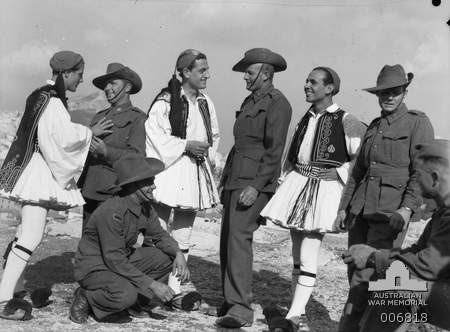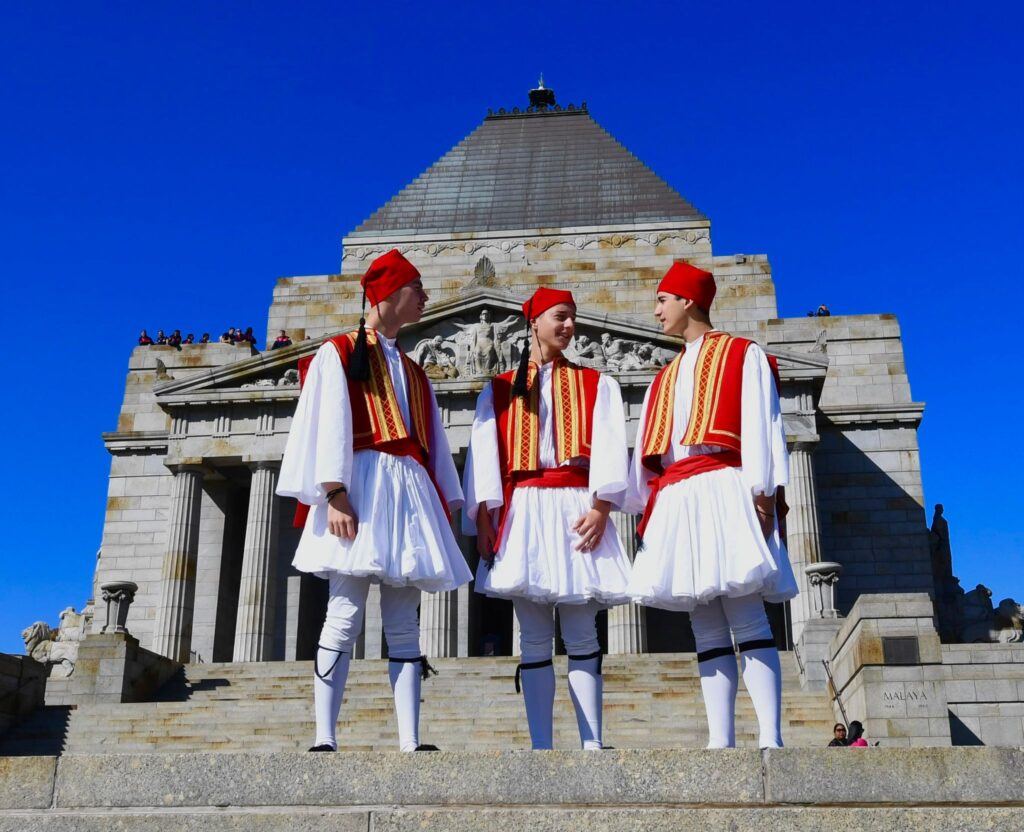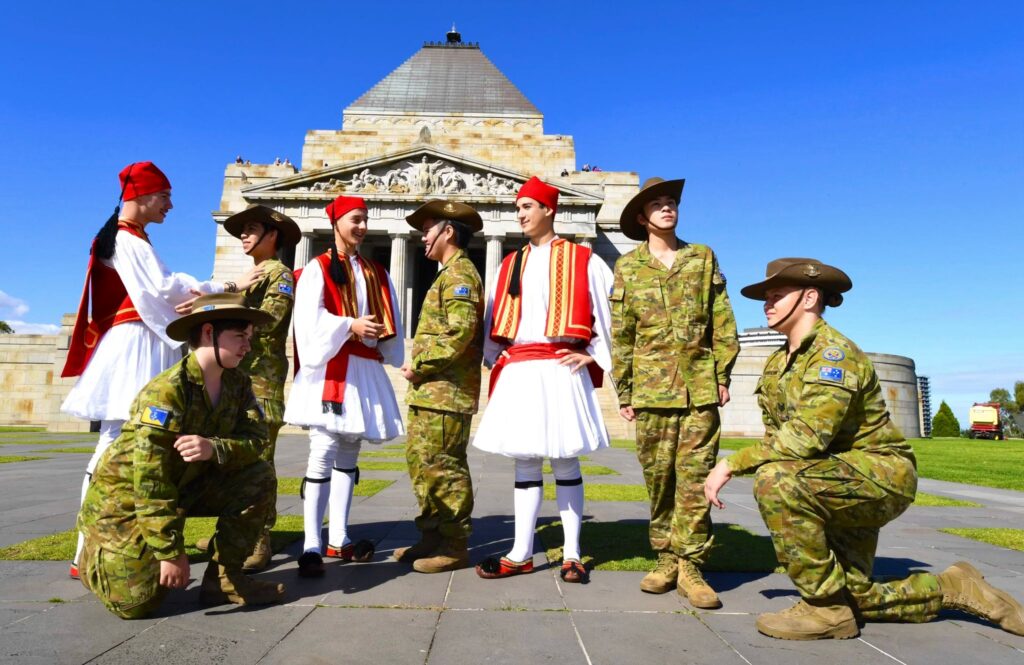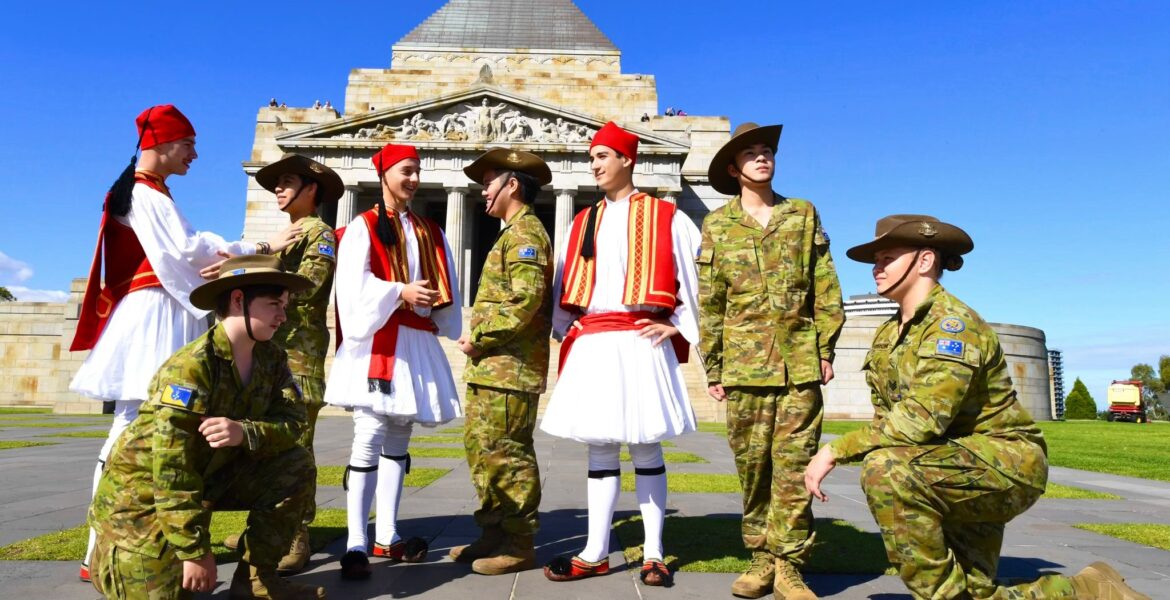The Pammessinian Brotherhood, ‘Papaflessas’, is a community group dedicated to preserving the rich cultural heritage connecting Greece and Australia. They have launched an exciting new initiative to recreate the iconic Australian wartime photograph taken by the famous war photographer Damien Parer.
The photograph was taken in March 1941, capturing the scene as three Greek Evzone and five Australian soldiers met informally on Athens’ famous Acropolis. The image captures a scene of peace and solidarity between Greeks and Australians, in the days prior to the German invasion in April.

The Evzones are the elite Greek soldiers serving as the vanguard of the Greek forces during the War of Independence in 1821.Their uniform, known as the foustanella, is a pleated skirt made of white cloth with 400 pleats, symbolizing the 400 years of ottoman rule in Greece. The evzone clogs, known as the tsarouchi, contains fifty nails in each sole. This makes a loud clacking noise when the soldier slams his foot down on the ground. The sound is said to be loud enough so that their ancestors know that they are alive, and free.
Vice President George Mastrogiannopoulos, age 26, stated: “As young Australians of Hellenic heritage, we feel it is important to remember the brave sacrifices made by these young Australians in the defence of Greece, serving alongside their Greek and other Allied comrades. That’s why we have taken this initiative to revive interest in this important part of Australian and Greek history.”
The photograph has been recreated with the support of Melbourne’s Shrine of Remembrance and the Hellenic RSL Sub-Branch. The former recognised the important commemorative component of the initiative and the latter provided five young Australian Army cadets from the ‘Thirty Army Cadet Unit.’ The three “evzones” in the photo are members of the Pammessinian Brotherhood, ‘Papaflessas’, who share the hope that the photo will serve as a powerful reminder of the importance of commemorating the sacrifices made by all those who served our country. Recreating this historic photograph before Melbourne’s icon Shrine of Remembrance, its design based on the ancient Mausoleum of Halicarnassus, is more than appropriate.

The Pammessinian Brotherhood is keen to ensure that the role of their region in the Greek campaign – and Australia’s part in it – is not forgotten. Messinia and its capital Kalamata played an important part in the dying days of the Greek campaign. Kalamata was one of the major evacuation points for the retreating Allied forces. Australians and locals created bonds of friendship as they awaited evacuation. While 9,000 Allied troops were successfully evacuated by Allied warships, 8,000 Allied soldiers – including Australians – were captured on 29th April.
Kalamata also witnessed the last significant engagement of the Greek campaign on the mainland, as Allied forces wrestled control of the port from advancing German forces on 28th April. Two Australians would be awarded medals for their bravery in the battle – Captain Albert Gray of Mildura and Private Max Wood of Albury. These men should not be forgotten.
With this initiative the Pammessinian Brotherhood in Melbourne is showing their appreciation for their regions important part in the Hellenic connection to Australia’s Anzac story, in the hope that it will never be forgotten.
The relationship between Greeks and ANZACs has a long history –from the role of Lemnos in the Gallipoli campaign of WW1, through to the Australian part in the Allied defence of Greece against the Axis invasion of 1941. Despite the latter campaign ending in defeat, the connection between Greeks and Australians was re-forged. Australians would again serve alongside their Greek Allies in Korea.

Historian Jim Claven, in his recent book Grecian Adventure encourages all Australians to learn about the deep connection between Australia and Greece through the Hellenic link to Australia’s Anzac story. The bonds of solidarity created between Australian soldiers and the Greek people endured in the memories of those who experienced long after the war had ended, only to be re-kindled in the waves of post-war migration from Greece to Australia, many coming from the Peloponnese and Messinian regions of southern Greece.
By recreating a historical photo, we can keep the memory of the significant bond between Greeks and Australians alive for future generations and allow for a better appreciation of how things have changed over time. It is a beautiful way to pay tribute to Greek and ANZAC predecessors.
The Pammessinian Brotherhood, ‘Papaflessas’, is a non-profit cultural and social organization dedicated to serving the local and wider Australian multicultural community. The organization’s primary focus is on promoting Messinian, Greek, and Australian cultural initiatives related to history, community engagement, and social events. For those unfamiliar with Greek geography, Messinia is a region located in the southwestern part of the Peloponnese peninsula in Greece.


